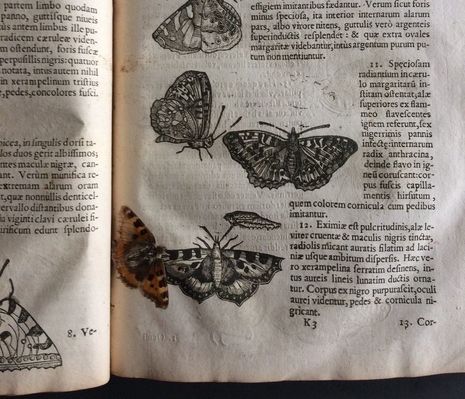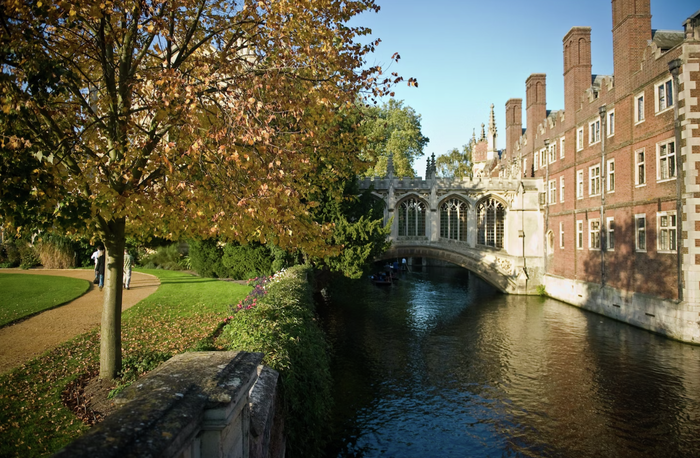Preserved Between the Pages: Jane Partner’s “Reformations” exhibition combines artefact with art
Kate Mia-Diamandi reflects on a transformative display which proves that art and academia truly can go hand in hand.

In the upper storey of Trinity Hall’s quaint Old Library, fellow Jane Partner’s artworks are displayed amongst the wonderfully preserved sixteenth-century setting. As I stumble in from the downpour of rain outside, the exhibition cases gleam in the struggling rays of sun streaking through the windows of the space. Fitting seamlessly into their surroundings, the glass cabinets poignantly fulfil the artist’s wish to integrate the story of the library into her work.
“Partner proves that creativity can be a part of intensive research”
The exhibition’s title, “Reformations”, reflects the artwork’s multifaceted symbolism, embracing the transformation of ideas as well as the re-use of materials. Partner advocates the reformation of research, challenging the prerequisite that academics surround themselves with piles of books, delving into archives and tirelessly researching - however poetic this image is. There is also a literal reforming occurring within each artwork; not only does Partner choose recycled materials, but she incorporates artefacts into the pieces, breathing a new life into old materials and reframing opinions on forgotten treasures. The pieces in the exhibition are small, the result of a deliberate conservative use of material, and therefore a reduced impact on the environment. Aiming to bring attention to environmental consciousness and the relationship between word and body in the Renaissance, Partner proves that creativity can be a part of intensive research.
With each piece relating to one another with ease, what initially seems like an ambitiously varied list of inspirations is integrated perfectly in the exhibition, organised into “the matter of memory”, “the relics of the future”, “grave goods” (ominously), and “poetry on the body.”
“I almost wanted to reach out and touch them, just to share the experiences of women from centuries past”
Every object in the exhibition is (in theory) meant to be worn - just like the earliest surviving human artefacts. This link between jewellery and human history fascinated me; with the pieces emulating a sense of personal intimacy and connection to the viewer, I almost wanted to reach out and touch them, just to share the experiences of women from centuries past.
Exploring the notion of memory, the first case houses a necklace made from recycled sterling silver with paper cuttings from sixteenth and seventeenth century books alongside a small silver replica of the Old Library itself. With each letter in a different size and font, positioned in its own individual square frame and attached to the necklace, I half chuckled to myself at the reminder of my younger self collecting letters from magazines to construct the disjointed sentences I had seen in movies. Spelling “metamorphosis”, the letters reference the piece’s material life-cycle; not only are the centuries-old cuttings reused and the silver recycled, but the paper itself has undergone its own regeneration. Drawing upon the use of linen rags from old, worn-out clothing to make paper in the early modern period, this piece embodies how even completely new objects still maintain the memories of their materials’ past life.
Combining art with nature, the second display contains a particularly intriguing silver reliquary pendant which displays a Victorian microscope slide with a specimen from the wing of a Urania Sloanus, an iridescent moth. The consistently rigid, angular forms of the silverwork are delicately juxtaposed by the sense of life in the objects within them. Proudly sitting beside it is a piece of Trinity Hall history: the librarian’s recent discovery of a tortoiseshell butterfly, preserved between the pages of Moffet’s Insectorum of 1634.
Drawing me in the most was a layered necklace with multiple strings of Roman glass beads excavated in Afghanistan, purchased from a project raising funds to aid refugees. Hanging from one of the strands is a small Roman glass vessel, suspended in a box made from recycled silver; inside, a sample of microplastics from the Cam. Referencing the contemporary political climate in Afghanistan as well as the Roman Empire and the climate crisis, what may seem to be polarising topics intermingle seamlessly within the artwork. The necklace transcends time and space, unifying three distinct aspects of human history. This movement through time continues into its neighbouring artwork “Iceberg: Core Temperature.” A phenomenon which fascinated the Roman poet Claudian, the crystal pendant contains a “fluid inclusion”: a pocket of liquid trapped inside a crystal which contracts when cooled, forming a fascinating moveable vapour bubble.
Attracting a variety of new visitors to experience the Old Library, Reformations displays an array of delightful pieces, each carefully endowed with meaning. While also speaking to so many of my personal fascinations, the exhibition felt like a physical manifestation of Jane Partner; encompassing the intersections of her academic and creative interests, her imaginative presence could truly be felt within each artwork.
 Comment / Cambridge is right to scrap its state school target1 May 2024
Comment / Cambridge is right to scrap its state school target1 May 2024 News / Academics call for Cambridge to drop investigation into ‘race realist’ fellow2 May 2024
News / Academics call for Cambridge to drop investigation into ‘race realist’ fellow2 May 2024 News / Gender attainment gap to be excluded from Cambridge access report3 May 2024
News / Gender attainment gap to be excluded from Cambridge access report3 May 2024 News / Cambridge postgrad re-elected as City councillor4 May 2024
News / Cambridge postgrad re-elected as City councillor4 May 2024 Comment / Accepting black people into Cambridge is not an act of discrimination3 May 2024
Comment / Accepting black people into Cambridge is not an act of discrimination3 May 2024





